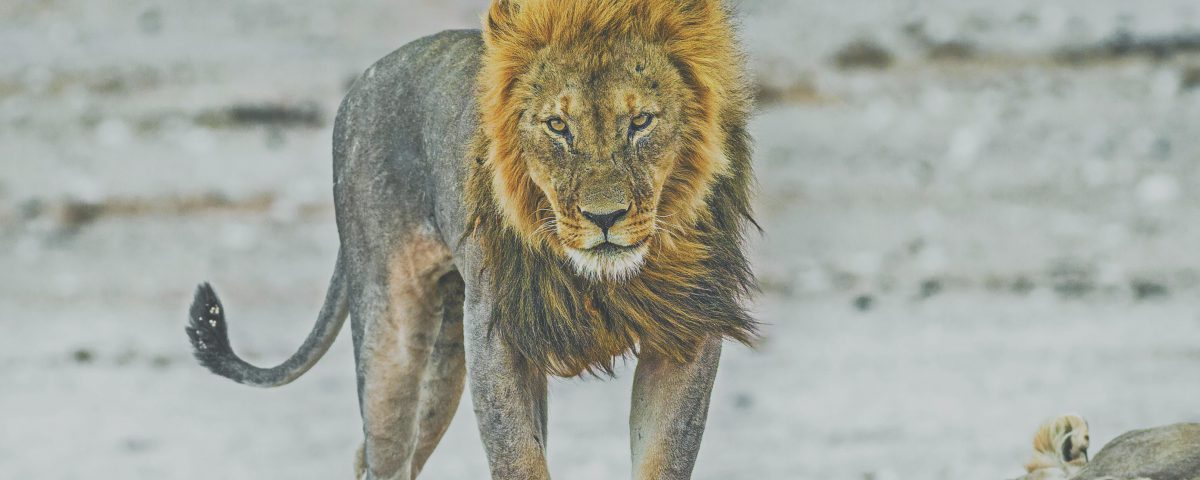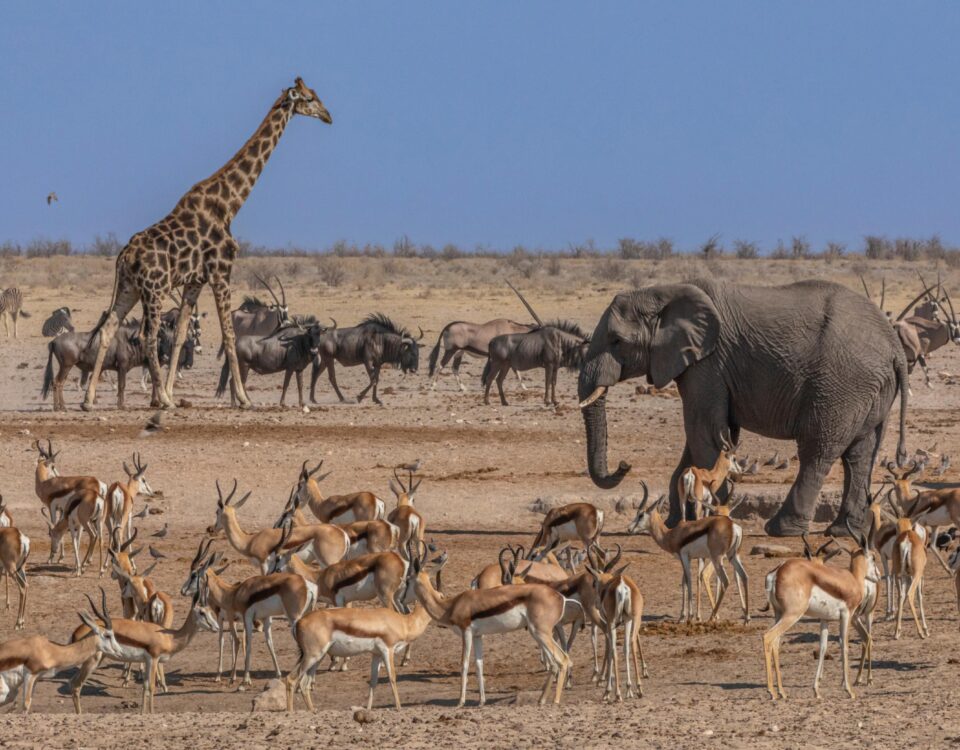
Namibia’s golden hour
August 16, 2017
Good sport & fair chase – mountain zebra in the Namib
August 16, 2017D uring the recent CITES Conference of Parties in Johannesburg it so happened that I was seated in the row behind the delegation of the Humane Society, all of who, like many other representatives, had placed a soft toy lion on their desk. A little plush lion with a soft, light-brown skin and a cuddly dark mane and tip of the tail sitting on its haunches, with head raised and a truly majestic and peaceful look to its face, placed next to the microphones on the desk to alert the audience to the plight of the king of the animal world. I thought to myself then: “If only you knew what a wild lion is all about!”
After my return I chanced upon a stunning photo of a pair of stalking lions; wild lions – their heads lowered as angry lions do, their eyes fixated on some target invisible to the onlooker, the male on the left with a battle- scarred face and a somewhat shabby mane as a thorn-veld lion ought to have. Looking at that photo in awe, I was, because of the lowered head and the stare in the fierce yellow eyes of that magnificent shabby-maned male on the photo, reminded of a situation many years ago, when on very short range I found myself face to face with an enraged wild lion; a moment which vividly comes to my mind now and which I would like to share.
It happened in the mid-1990s to the west of Khaudum. Early one morning we had come onto the footprints of a huge solitary lion in the soft Kavango sand. e footprint of a lion alone, if you are on foot as well, is enough to stir the imagination and to make you think twice about what you are up to, especially if you walk through obscure terrain. We took up the spoor of that lion. With me were Max Theurer, a rugged old hunter no longer amongst us, and an old Bushman hunter, who also has left for the happy hunting grounds by now. And the wilderness to the west of Khaudum is no longer either – it has been transformed to cattle farms in the meantime.
After tracking for a while, we realised that the lion was heading for the remains of the carcass of an elephant we had shot a few days ago. Approaching the spot, we also saw that the vultures whose circling on the thermals in the blue sky above the remains most probably had attracted the lion to the scene, were sitting in the trees, which told us that the lion would still be on the carcass. To have space when cutting up the elephant a few days ago, we had cleared away some of the thick silver terminalia shrub in which the elephant lay, creating a little clearance of perhaps thirty metres diameter in the thicket. Leaving the tracker behind, Max and I now closed in on this clearance in intense alertness and tension from downwind, sneaking towards the edge of the clearance on tiptoes, pausing every so often to listen for gnawing sounds, adrenaline rushing madly through our veins.
Reaching the edge we realised that the lion was not visible on our side of the heap of intestines, backbone and ribs we had left behind. We imagined the lion to perhaps lie up behind this heap, so sneaking along in a semicircle at the edge of the brushwood, rifles at the half ready, we eventually realised that the lion was not there either. So, with tension ebbing off , we lowered our rifles, exchanging a few soft words, when, with a furious growl, the lion all of a sudden rose from the shade of the matted brush, perhaps five or six paces to our right. Since I was on the right side with Max to my left as to allow him an unobstructed line of fire at the carcass to our left, the lion was immediately next to me, I being in the line of re for Max. For a split second I stared the furious lion in the face, the image burned into my memory forever; head lowered, eyes ery, a deep rumbling growl coming from its heavy chest.
More out of instinctive re ex to put up a stern face in the light of that rumbling growl than from necessity, because Max was an experienced hunter and did not need this encouragement, I shouted loudly: “Shoot!”
With Max rushing to my side to get an unobstructed line of re in the instant my voice rang out, the lion flew round and bolted, throwing the tail into the air. Max’s hurried shot after the running lion went just behind the disappearing beast.
Our hearts beating madly, the blood rushing through our veins so loudly that we could hear it, we stepped up to the carcass of the elephant, where I discovered a strand of long yellow hair jammed in the end of a jagged bone the lion had gnawed at. I removed that blond strand and wound it around my index finger to take it with me. It felt hard, coarse and brittle. I later placed it in a matchbox together with a piece of wood I had taken from the temporal gland of a big elephant bull. Little charms symbolizing the African wilderness, which, in hindsight, I would like to have placed next to the microphone on my desk at the CITES Conference to alert the audience to the plight of the unspoiled African wilderness – habitat for magnificently wild creatures, which disappears at a horrific rate and which is not found on any Appendixes.
After my return I chanced upon a stunning photo of a pair of stalking lions; wild lions – their heads lowered as angry lions do, their eyes fixated on some target invisible to the onlooker, the male on the left with a battle-scarred face and a somewhat shabby mane as a thorn-veld lion ought to have. Looking at that photo in awe, I was, because of the lowered head and the stare in the fierce yellow eyes of that magnificent shabby-maned male on the photo, reminded of a situation many years ago, when on very short range I found myself face to face with an enraged wild lion; a moment which vividly comes to my mind now and which I would like to share. Unfortunately the photographer was not prepared to release the photo in question, so I leave it to those who know the African wilderness and lions to imagine the scene.
This article was first published in the HuntiNamibia 2017 issue.


